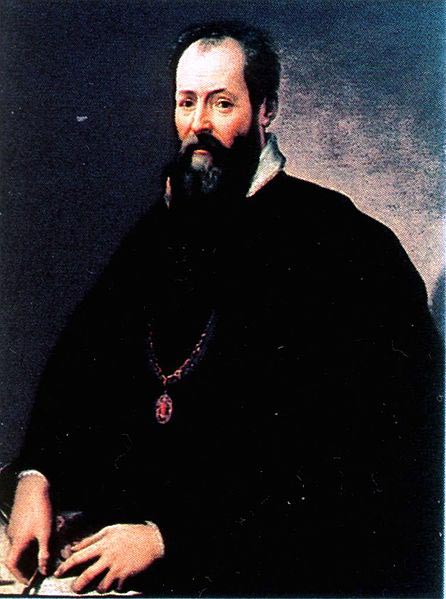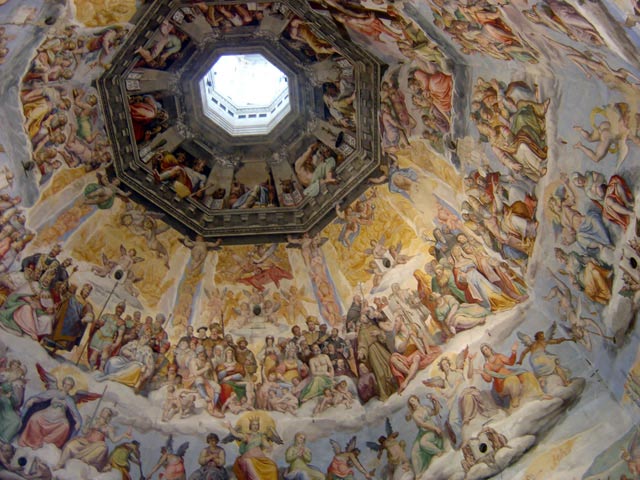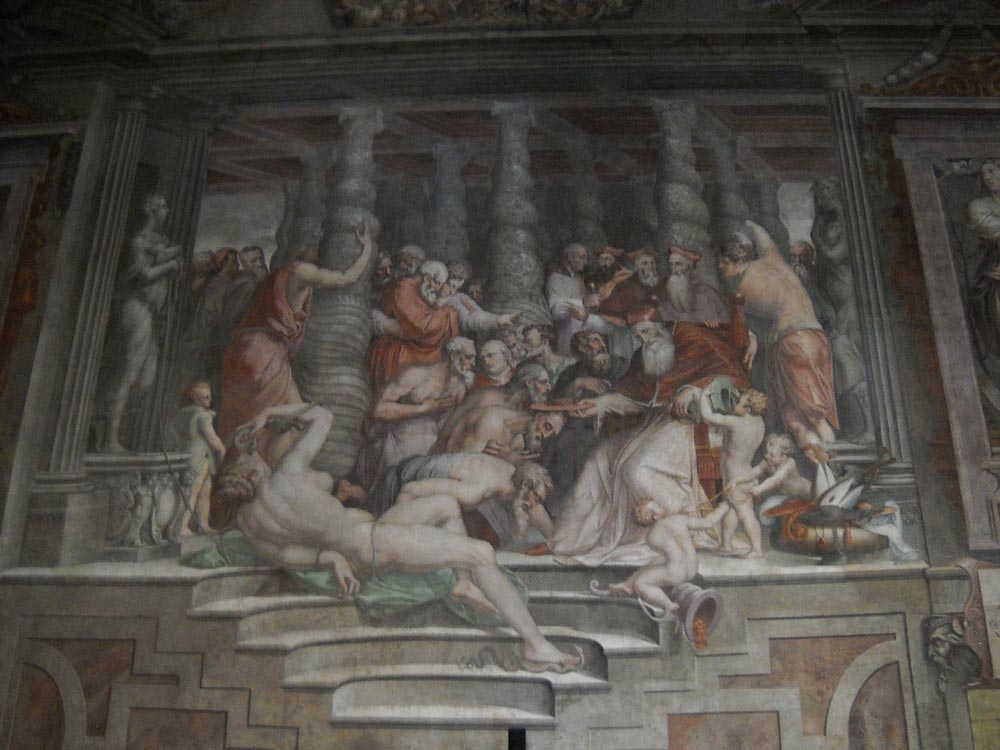| Giorgio Vasari | |
|---|---|
 |
|
| Born | July 30, 1511 Arezzo, Tuscany |
| Died | June 27, 1574 (at age 62) Florence |
| Nationality | Italian |
| Education | Andrea del Sarto |
| Movement | Renaissance |
| Field | Painting, architect |
| Works | View Complete Works |
Giorgio Vasari was an Italian artist of the Renaissance movement who also studied methods and techniques of early Mannerism. Vasari is most recognized for his descriptions and biographies of Renaissance artists. His architectural skills were admired during his lifetime, and his most revered works were his paintings on the ceilings and walls of the Palazzo Vecchio in Florence. Although he was an accomplished painter with influences of Raphael, and Michelangelo, his artist biographies have given a written picture of the artist’s characters, as well as their works and artistic techniques. It is because of Vasari’s foresight, that the art historians of today, know many of the important art works, which have since been lost.
Art Development
Vasari was born in Arezzo, Tuscany, in Italy. Upon his cousin’s recommendation, Giorgio became a student of Guglielmo da Marsiglia, a prominent stained-glass artist. At age 16, Vasari was sent to Florence, by the Cardinal, to study under Andrea del Santo, an Italian High Renaissance/early Mannerism artist from Florence. Vasari befriended the great Michelangelo, whose style would later shape his own.
In 1529, Vasari left for Rome in order to study the works of Raphael, a High Renaissance artist. He then began painting frescoes for the hall of the chancery, in Palazzo del Cancelleria, in Rome. His work was named Sala dei Contro Giorni, and was painted to celebrate the life of Pope Paul III. Vasari was often commissioned by the Medici family, in Florence and Rome, and he also painted in Naples and his home of Arezzo.
Giorgio Vasari accumulated quite a fortune and was respected for his talents during his lifetime, which is quite unusual. He built his own home in Arezzo, which is now a museum in his honor, and the walls are decorated with his beautiful paintings. Vasari was elected to the Arezzo council, and later earned the supreme title of gonfaloniere, a prestigious office at that time. Giorgio Vasari died in Florence, Italy, in 1574 as a respected artist, architect, and famous historian.
Contributions in Architecture
Vasari’s architecture may have perhaps been more successful than his paintings. The loggia which he constucted on the Palazzo degli Uffizi by the Arno River was a long corridor, connecting the Uffizi with the Palazzo Pitti, which was on the other side of the Arno River. The enclosed corridor crosses the Ponte Vecchio and lines the outside of several buildings. Vasari also renovated several medieval churches, such as Santa Croce, and Santa Maria Novella. In 1562, Giorgio constructed the octagonal dome, which was an example of High Renaissance architecture, for the top of the Basilica of Our Lady of Humility, in Pistoria.
Characteristics of Paintings
Vasari studied early Mannerist methods in the Rome and Florence art schools, with Raphael and Michelangelo being Renaissance influences as well. The Mannerism period existed during and after High Renaissance, and used chiaroscuro, perspective, and religious themes. Chiaroscuro, or using contrasts of light and dark were used to create shadows and depth in paintings. Subjects chosen were often Catholic themes, or centered around Classical mythology. The Classical technique of foreshortening, created perspective in paintings, and Realism was also used to create a sense of emotional expression.
Vasari the Historian
Giorgio Vasari created the first art history book known to be written. He developed what we now consider an encyclopedia format of artistic biographies, coining the term Renaissance, or period of rebirth, in print. This book was published in 1550 and listed artists from Giotto’s time in the 1300’s, to Michelangelo, who was still alive during this book’s compilation. Vasari’s book gives a written picture of the artists’ character, technical methods, and even amusing stories about them. The book named Le Vite de Piu Eccellenti Pittori, Scuttori, e Architettori, or The Lives of the Most Excellent Italian Painters, Sculptors, and Architects, was really Vasari’s masterpiece. It is still studied today.
While Giorgio Vasari was an accomplished painter and architect, his most memorable work lives on through the evolution of art, described in his book. He enjoyed a varied and successful career, and was respected by his community and fellow artists. He was co-founder of the Florence Accademia delle Arti del Disegno, along with Cosimo I de Medici, in 1563, which promoted the preservation of the works of art in Italy, and was the first academy of drawing ever established in Europe. His art and history live on because of his varied works.

